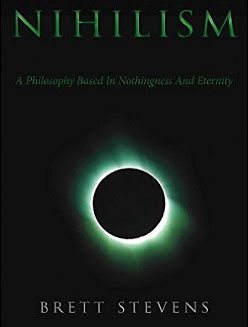Cutting the Workweek, and Cutting Who Is Employed
Distinguishing between jobs and work provides us with an important observation: work is inherent to life, but jobs consist of work done for the approval of others, which means that procedure becomes more important than results, even if at the best jobs it is only marginally so (means-over-ends).
Jobs are miserable because very little of them involves work, and most of them involves the imitation of work so that managers, their bosses, and clients see a lot of activity and feel comforted. Other than real producer jobs — agriculture, construction, factories, mercenaries — most forms of paid employment are mostly play-acting.
Consequently people are looking for ways to make jobs less hateful especially after the COVID-19 panicdemic sent everyone home and we all found we liked that better. This has revived the debate over shortening the workweek, starting with the four-day workweek that makes every weekend a three-day minication:
But even with this bespoke four-day week model, Roderick says his firm quickly ran into problems. “As opposed to 10 normal workdays, we found that employees would have nine extreme ones – once they got to their scheduled day off they were exhausted. Once we factored in holidays, sickness and caring responsibilities, we also struggled to find cover for an employee on their rest day.”
The experience of this firm shows the problem of the four-day workweek: we waste lots of time in offices because we might be needed, so they fill our days with nonsense so that on those random days when we are actually needed, we are present warming a desk and mostly paying attention.
This occurs because the primary task at a job is to do what your boss says so that his job is secure, and to be good at working together with others, however inefficiently, so that things actually happen eventually. If the boss needs you or the team needs you, you have to there warming that desk or at least in a Zoom meeting.
Acknowledging that, others have called for the six-hour workday as a way to compress work, making it more efficient, without unduly crushing availability:
Some organisational psychologists suggest shortening the workday. Wrapping up in a shorter span of time — such as six hours rather than eight — could prove a practical solution for more types of businesses, and go a long way towards improving the lives of workers, too. “There are businesses that do need to make themselves available five days a week,” says Celeste Headlee, author of Do Nothing: How to Break Away from Overworking, Overdoing, and Underliving. “And for those businesses, it may be easier and more convenient to shorten the workday.”
Indeed, studies show working longer does not necessarily correlate to greater productivity in general. Research from Stanford University has indicated there’s an upper limit to productivity: worker output begins to fall sharply after about 48 hours. And other experts suggest that optimal working-hour number could be even lower, depending on the type of work – some positing it could be as few as 35 hours per week or six hours per day, putting employees well below an eight-hour workday. Norway and Denmark have workweeks shorter than 40 hours, and are respectively the second- and seventh-most productive countries in the world.
Reducing the working day would create an incentive for people to do what they do more efficiently, and would switch signals to management from the current state where working more hours looks like working harder, to a “work smarter” state of mind where getting everything done in six hours demonstrates actual application.
Some experiments in six-hour workdays resulted in some positive indicators:
From 2015-2019, Iceland ran two large-scale trials of a reduced working week of 35-36 hours with no reduction in pay.
The trials were an overwhelming success, and since completion 86% of the country’s workforce are now working shorter hours or gaining the right to shorten their hours.
Productivity and service provision remained the same or improved across the majority of trial workplaces.
Worker wellbeing dramatically increased across a range of indicators, from perceived stress and burnout, to health and work-life balance.
Lack of a drop in productivity indicates that the longer workday is the result of work expanding to fill the time allotted, not more work that results in positive end results being done.
It turns out that cutting working hours removes filler and distraction that eat up most of the work week but return nothing for the bottom line:
So, what are team members doing with the rest of their workday? Well, this can vary depending on the job, but common tasks include:
- Attending meetings
- Fixing problems they didn’t cause
- Administrative work
- Responding to emails
- Dealing with customer issues
In fact, a study by Atlassian suggested that meetings can be the number one barrier to productivity—with 78% of people saying they’re expected to attend so many meetings, it’s hard to get their work done.
Another option might be to cut the workforce. If we stopped the immigration game and sent women home to have more fulfilling lives as wives and mothers, the remaining workforce would see its salaries rise alongside its responsibilities, allowing jobs to become less pro forma and more results-oriented.
Jobs have been horrible for a long time. In the 1950s, people spent less time at work. Then came the anti-poverty and civil rights taxes, affirmative action, endless regulations, unions, lawsuits, and other parasites of time, money, and energy.
Perhaps as people awaken from the modern nightmare, one of the first illusions to fall will be the perceived need for everyone to be at a job all the time so we can proclaim ourselves an equal worker’s paradise and feel good about how bad everything is because we have the moral higher ground.
Tags: antiwork, employment, jobs, office, work










